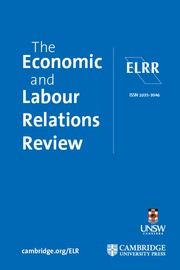No CrossRef data available.
Article contents
Nowhere else in the world? The Korean Safe Rates System in global context
Published online by Cambridge University Press: 11 November 2024
Abstract
The Korean ‘Safe Trucking Freight Rates System’ (‘Safe Rates System’) was an important effort to address road safety risks by regulating road transport supply chains. In effect between 2020 and 2022, the system set minimum standards for truck driver pay and placed obligations on road transport supply chain parties to comply with these standards. In this article, we explain how the system developed in response to the deregulation and restructuring of the road freight market in the late 1980s and 1990s. We also trace the influence on the system of regulatory development in Australia and debates at the International Labour Organization (ILO). In 2019, workers, employers, and government representatives at the ILO reached an agreement on the main principles of the Safe Rates regulatory model through the adoption of the Guidelines on the promotion of decent work and road safety in the transport sector. We use these principles to explain and evaluate the Korean system. We also summarise assessments of the system’s impact, arguing that the results of the few studies that exist, justify the continuation of the system. By locating Korean Safe Rates as part of a broader global trend, we respond to opponents’ claims that the system is without international precedent and make the system eligible for a global audience. In so doing, we seek to contribute to the ongoing debate about the reintroduction of Safe Rates in Korea and draw lessons from the Korean experience that may be used in other countries.
- Type
- Contested Terrains
- Information
- The Economic and Labour Relations Review , Volume 35 , Issue 3: Dedicated to Dr Tanya Carney – collegial scholar , September 2024 , pp. 649 - 663
- Copyright
- © The Author(s), 2024. Published by Cambridge University Press on behalf of The University of New South Wales


